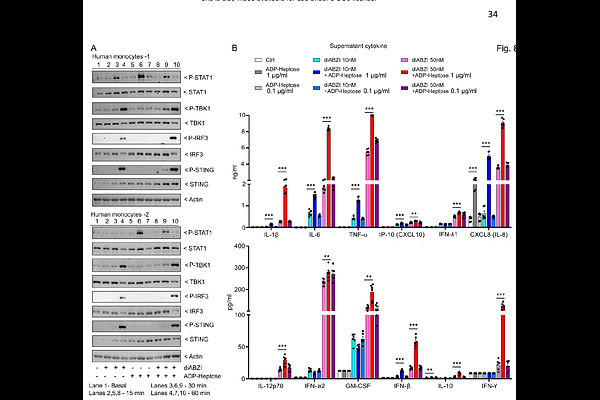Crosstalk Between ALPK1 and STING: A Synergistic Axis in Innate Immune Activation and Human Inflammatory Disease

Crosstalk Between ALPK1 and STING: A Synergistic Axis in Innate Immune Activation and Human Inflammatory Disease
Shi, C.-S.; Kozycki, C.; Huang, N.-N.; Hwang, I.-Y.; Hammoud, D. A.; Kastner, D. L.; Kehrl, J. H.
AbstractAlpha kinase 1 (ALPK1) is a cytosolic sensor of microbial sugar metabolites that activates NF-{kappa}B signaling through phosphorylation of the adaptor protein TIFA. Although canonically linked to NF-{kappa}B, individuals with gain-of-function ALPK1 mutations also show features of interferon-driven inflammation. Here, we show that ALPK1 activation enhances multiple outputs of the stimulator of interferon genes (STING) pathway, including both canonical and noncanonical responses such as STING proton channel dependent LC3B lipidation and NLRP3 inflammasome activation. Furthermore, ALPK1 signaling activates eIF2, an effector of the integrated stress response. Conversely, STING activation increases ALPK1 protein expression and triggers TIFA-Threonine 9 phosphorylation. Clinically, individuals with ALPK1-mediated disease exhibit premature intracranial mineralization and elevated cerebrospinal fluid neopterin, both associated with dysregulated interferon signaling. These findings support a model of bidirectional signaling between ALPK1 and STING, in which microbial and nucleic acid sensing pathways can amplify one another. This crosstalk provides a mechanistic framework for understanding innate immune signaling relevant to both homeostasis and disease.